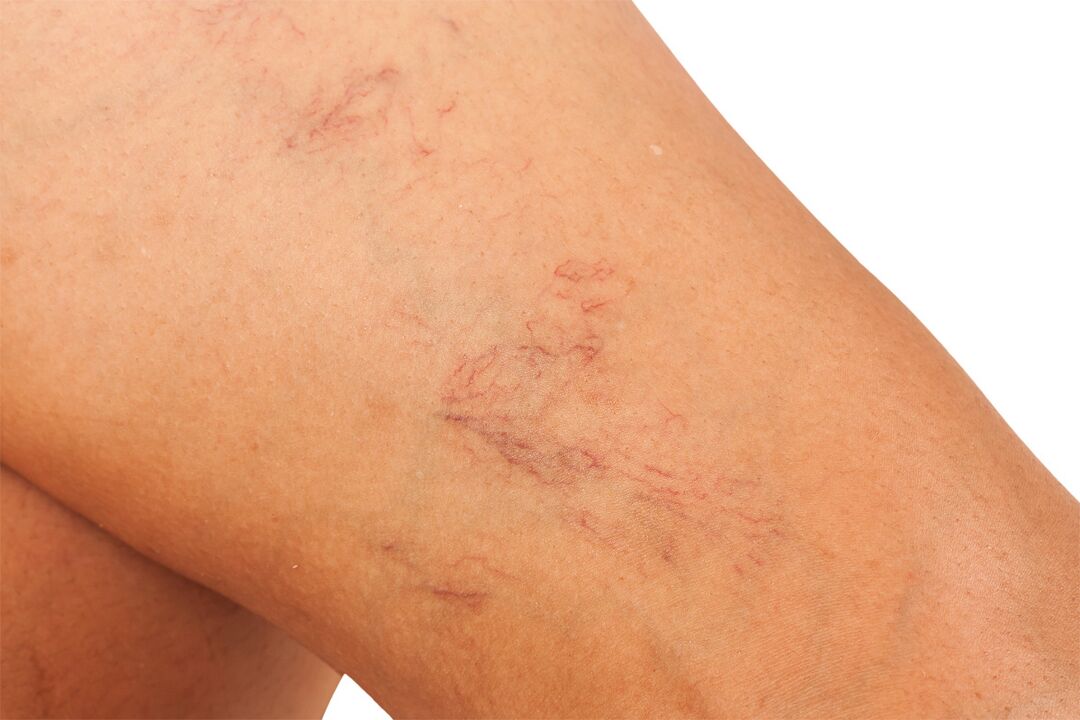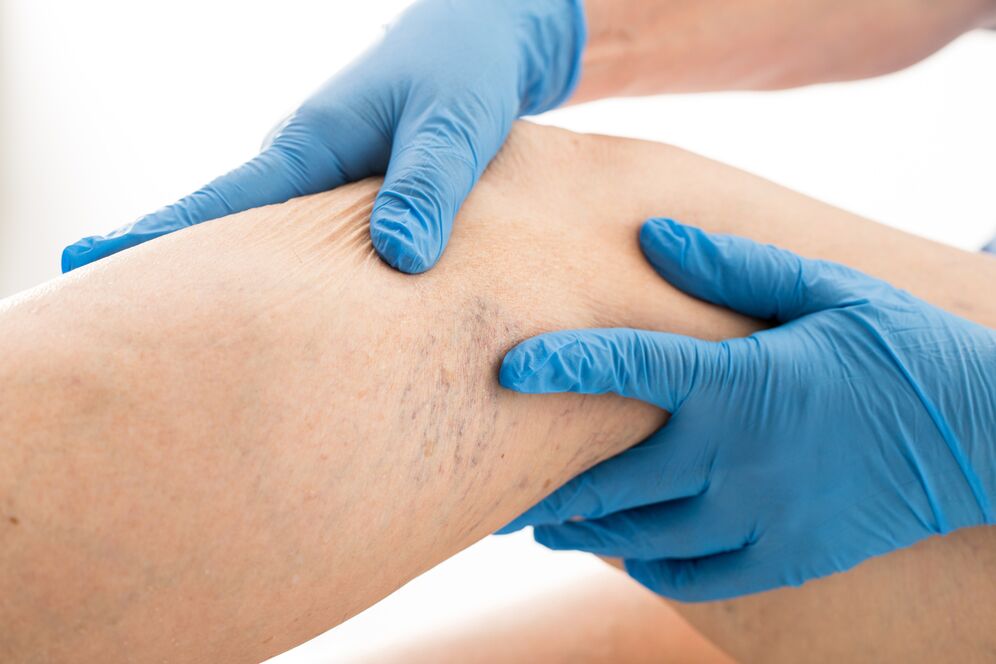Probably every third or even every second person these days are the varicose veins of the legs. This has become a real disaster, especially when we consider that our feet are filled in today's civilized world. You need to know how dangerous the varicos are before the first signs appear.
What are the varicos

The legs are varicosis is a chronic disease in which the veins of the legs are expanded, creating nodes that result in disruption of the bloodstream and the blood remains in the venous system. In the disease, the lumen of the veins As a result of blood outflow in the veins in the legs of the feet, there are valves that only pass blood, which does not allow the blood to stagnate in the legs. If the work of such valves is disturbed, the blood moves in a different direction, stagnating in the legs.
Causes of varicose veins on the feet of women and men
Of the causes of varicos, the legs are primarily called a hereditary predisposition to this disease. If you are in your family, someone has a vein of varicose veins on the legs, then patients have extremely high disease, as the disease is due to the hereditary weakness of the venous wall of the most common causes.
The varicose veins of the legs are primarily women's diseases, as wearing high rodent shoes significantly increases the risk. In addition, hormonal shaking is given to the fire during pregnancy or menopause, which also provokes the expansion of veins in women.
Most often, the feet are ill after forty years, but is often found at a young age. Most often in adolescents or young people, the disease develops between veins and arteries due to arterio-venous fistulas open messages.
The expansion of veins on the legs is found in the nature of the profession, so the legs give heavy loads. This disease is often ill with people who live a sedentary lifestyle, spend a lot of time standing and little movement. Closure -uncomfortable shoes and extra pounds contribute to stagnation. Liver diseases such as cirrhosis or hepatitis can cause veins on the legs.
This disease is quite common among athletes, and this suggests that excessive physical activity can also provoke it.
Symptoms and signs
At the initial stage, the symptoms of the varicos on the legs are not obvious, and the disease can occur unnoticed. Or the signs of the veins' expansion are obvious - the large winding veins on the legs reach under the skin, but one does not experience pain. Vienna can be manifested, gradually protrudes on the skin, and manifests itself after hard physical exercises or hard work. Occasionally, veins appear suddenly after a man spent on his feet all day.
But if you have noticed that the subcutaneous veins will be thick when examining the lower leg, there are places that have a knotted extension and the veins themselves swell when you stand and fall when you go to bed, you will probably start the varicose veins.
Another symptom is swelling of the legs during the day sitting, positioning, walking, and reducing swelling in the lying position.
The bright properties of the disease also pigmentation of the inner surface of the legs - the skin is compacted, less elastic, painful glow. In areas of this skin, the hair falls out.
Varicosis is also characterized by a feeling of pain and continuous fatigue in the legs. Man is quickly tired, sometimes cramps.
Diagnosis and Treatment: Medicines, Operations, Folk Medicines
Varicosis is diagnosed when a surgeon examines it based on a specialist and Uzbee veins. Flebography is also performed, ie contrasting painters are introduced into the blood and then the veins are tested.
Treatment depends on the stage of the disease and whether the disease is accompanied by complications. Treatment can be based on conservative and surgical methods. Conservative means wearing stockings or stockings, using drugs for internal and external use. Conservative treatment methods include sclerotherapy and laser irradiation. Especially in complex cases, veins are removed by surgery.
The person suffering from the varicose veins of the legs should be aware that, if the leg, fever and skin compresses, a doctor should call a doctor. Such an attack is accompanied by shortness of breath, lack of air, weakness and bleeding.
Expert Review: How is this related to varicos? Muscle of expanded vein occurs, thrombus inflammation of thromboflebitis. This disease can occur at increased body temperature. Some of the thrombus can break and enter the lung artery, which can cause shortness of breath and improve serious life -threatening symptoms.
In such cases, do not with home treatment - call your doctor.
The most effective and radical method of treating the varicose veins of the legs is of course. The surgery of conservative treatment methods is not effective. The essence of the operation is the result of the fact that the surgeon removes the extended blood vessels through a small incision on the skin. Then the leg is thoroughly tied, and after a few hours the patient can stand up and even walk. This is perhaps the only guaranteed method for getting rid of the serious consequences of the disease.
Folk medicines can help with traditional treatment or alleviate the condition of the patient. So, when creating herbs, the main components are as follows:
- horse chestnut;
- Kalanchoe;
- Sagebrush;
- White willow bark;
- Mokrin;
- celandine;
- cabbage.
Popular products of animal fat, apple vinegar, beekeeping products (honey, propolis), body, clay and other components also promote the cure of the disease.
The consequences of varicos
The varicose veins of the legs cannot be omitted by itself, it should be treated because the advanced, this disease can cause many unpleasant and sad consequences. Thus, varicose veins can be complicated by eczema and dermatitis - inflammatory skin diseases, which are precisely due to venous blood stagnation. Eczema is characterized by the appearance of redness focus, and the edges of this redness are uneven, the skin in these places is itching and cracks or bubbles.
Varicose eczema, on the other hand, can turn into a trophy ulcer. Trophic ulcer is also a complication of varicose veins - it is a ulcer that does not heal for a long time on the lower leg. The tropical ulcer begins with a shallow ulcer characterized by a bloody or transparent liquid at the bottom. It is an extremely painful wound that thoroughly ruins a person's life - leads to a violation of life, sleep.
One of the most common complications of the foot varicos is thromboflebitis, ie vein, accompanied by a blood clot or blood clot. Thromboflebitis is usually accompanied by severe pain when walking, fever, redness of the skin and seal formation. In the case of thromboflebitis, the vein crack at the site of expansion is possible, which results in bleeding. In this case, your doctor should be called immediately.























